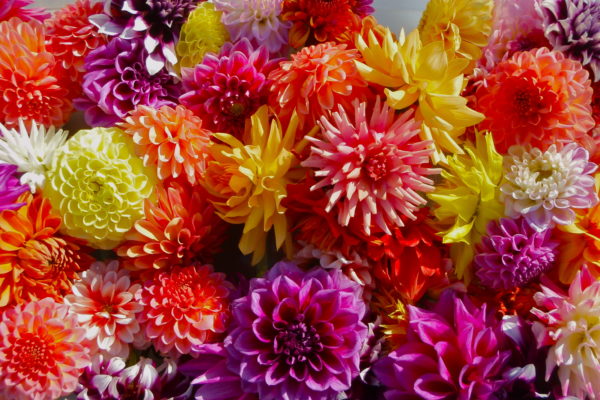
Many summer residents consider perennial dahlias capricious plants, and rarely plant them in a flower bed. However, the opinion is erroneous. All difficulties during cultivation will be able to pay off with long flowering and saturated colors.
Perennial dahlias are represented by bright inflorescences that can decorate any flower bed. The group is very common, it has about a thousand different varieties. Many summer residents are happy to grow plants and can admire the colorful flower garden.
Content
Characteristic of Perennial Dahlia
Plants delight long flowering. The root system has a tuber structure. The stems can be of different heights. Based on the selected variety, the size of the stems reaches from 30 to 120 cm.
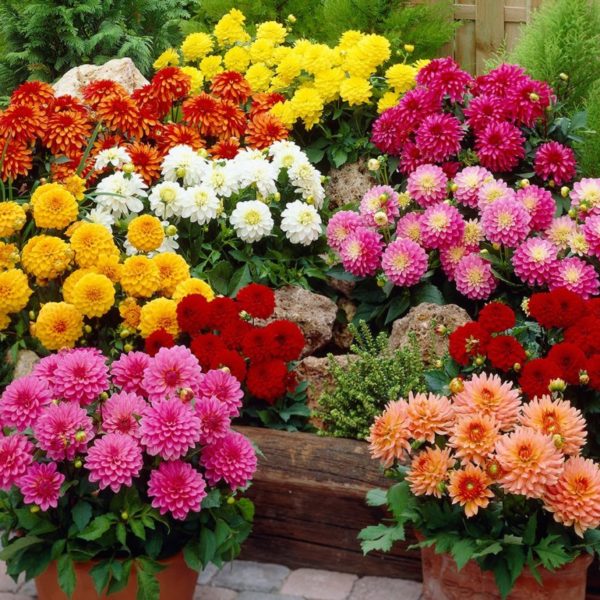
Dahlias bloom for quite some time. Flowering begins in late summer, lasts until the first frost.
What dahlias love
To grow perennial dahlias, you need to familiarize yourself in advance with what they prefer:
- Heat. Flowers need a warm climate. Even at the slightest frost they die.
- Shine. With insufficient lighting, the stems will be elongated, and the flowers will be pale.
- Fertile soil. Flowers can grow on any soil. However, they can please with magnificent blossoming only on light loamy or well-fertilized soils.
- Ventilation. When planting flowers, you must carefully select the site. Bushes should not be planted close to each other.
- It is important that flowers should be protected from drafts.
- Watering. Watering plants should be timely and moderate.
What dahlias don't like
Despite the fact that the flowers are unpretentious, there are still moments that they do not like. Familiarize yourself with them in advance:
- Wintering conditions. If the basic rules are not observed during the winter period, the plants will die.
- With insufficient lighting, the bushes will not be able to develop.
- Waterlogging the soil. Watering should be moderate. Otherwise, the root part will begin to rot as a result of which the plant will die.
- Fresh manure must not be added to the soil.
- No need to plant plants in places where there are often winds.
- Bushes must be tied up.
Breeding dahlia
Before planting and caring for a perennial dahlia, you need to learn about breeding methods. There are several options, each of them is special and deserves attention:
- seed propagation. In breeding work is used most often. It’s worth starting sowing in March. First you need to prepare containers with soil. It is best to make a mixture of sand and peat. As soon as the seedlings sprout, it is necessary to dive;
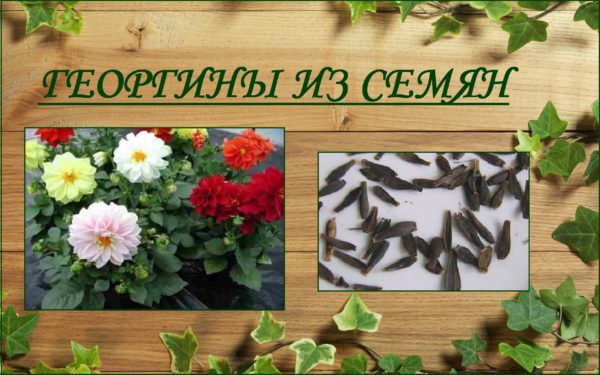
- propagation by cuttings. The method is considered the most common. Starting in January, tubers need to be sprouted. First you need to prepare boxes filled with sawdust.
Once the sprouts become 7 cm in size, they need to be cut with a knife. Cuttings should be planted in the ground, covered with a film on top. As containers, it is advisable to choose plastic pots;
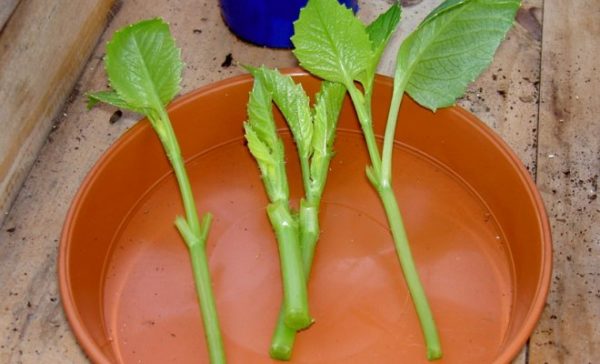
- reproduction by division of tubers. First of all, tubers are worth germinating.On the site you need to dig a trench, put tubers in it, sprinkle with earth, cover with a film. Sprouts will appear in 20 days. After that, the film can be removed. However, shelter should not be removed at night.
As soon as the first sprouts appear, you can begin to divide the tubers. They need to be cut as follows: each part should have 2 eyes. Each needs to be processed with a solution of potassium permanganate.
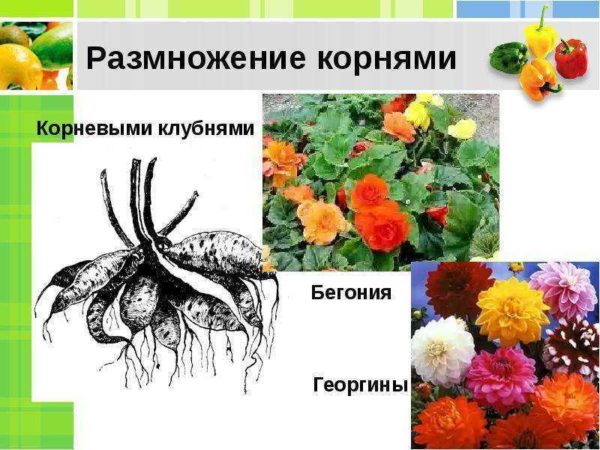
Selection of seedlings
Before planting perennial dahlias on the site, you need to pay attention to seedlings. You need to choose only high-quality seed. Tubers must be resilient, healthy, with no visible defects.
Before planting, seed must be prepared. Start work in May. Dry tubers must be removed from the tubers. Then it is worth preparing a nutrient substrate, and planting tubers in it.
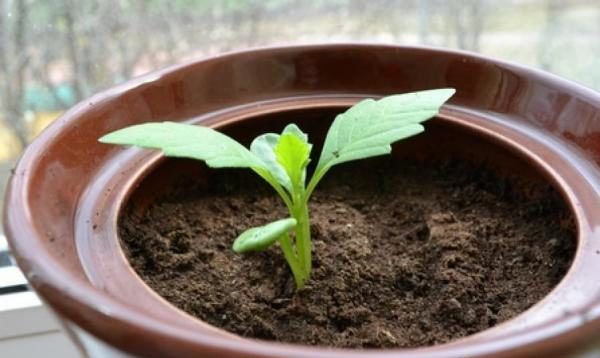
Site selection
Dahlias do not have special requirements for soil. However, they prefer to grow in sunny areas. Wet soils categorically do not fit, tubers will begin to rot.
Soil preparation
Before starting sowing, it is necessary to prepare the soil. To do this, dig the earth, make compost and wood ash.
Planting plants in the soil
- Compost, lime, ash must be added to the ground. The depth of the hole should not exceed the bayonet of a shovel.
- Tubers should be laid at the bottom, sprinkled with earth. In conclusion, it is necessary to water and mulch.
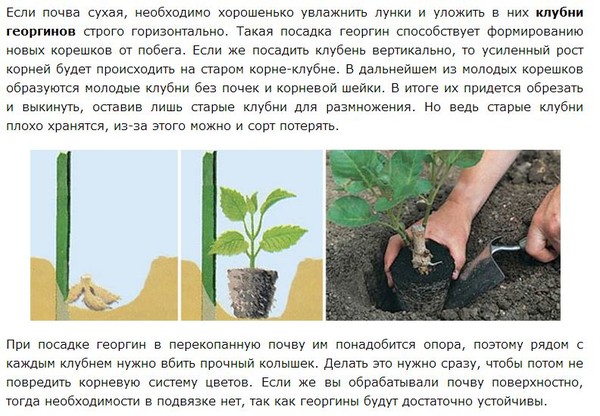
Dahlia Care
After planting plants in the soil, you can forget about the main difficulties. However, this does not mean that dahlias do not require care. If you follow simple rules, you can get an amazing flower bed.
Caring for a perennial dahlia is as follows:
- Watering. The procedure must be carried out in a timely manner. The tubers must not be allowed to stagnate. This will rot the root system. Watering plants need to be correct. You can not pour water on the leaves, they can rot. Watering should be done early in the morning or in the evening.
- Top dressing. No need to abuse nitrogen fertilizers. This can lead to modest flowering, while the tuber will be weakened. Dahlias need regular fertilization.
- The first procedure is carried out 10 days after planting flowers in open ground. As fertilizers, nitrogen-containing compounds must be used.
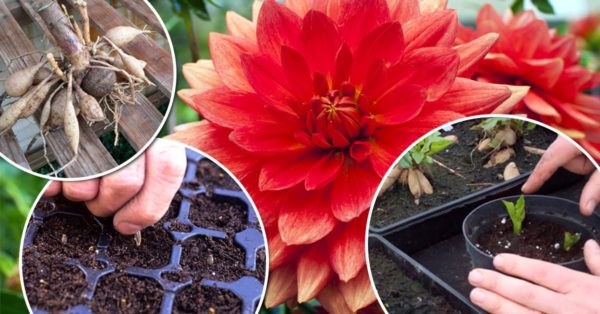
In the fall, several phosphorus-potassium top dressings will be required. Flowers respond well to wood ash. To do this, just scatter it between the bushes.
- Weeding
When weeds appear, they must be removed immediately from the site. Weeding is best done manually. If the soil after planting flowers is mulched, the procedure will have to be carried out in rare cases.
- Pinching and pinching
This procedure is only for tall plants. This will allow you to get lush flowers, in addition, the flowering process will begin much earlier.
- Bush formation
As soon as the flower withers, it must be removed immediately. If this is not done, faded buds will slow the growth of others. In order for the flowering to be magnificent, only 3 buds should be left on each bush.
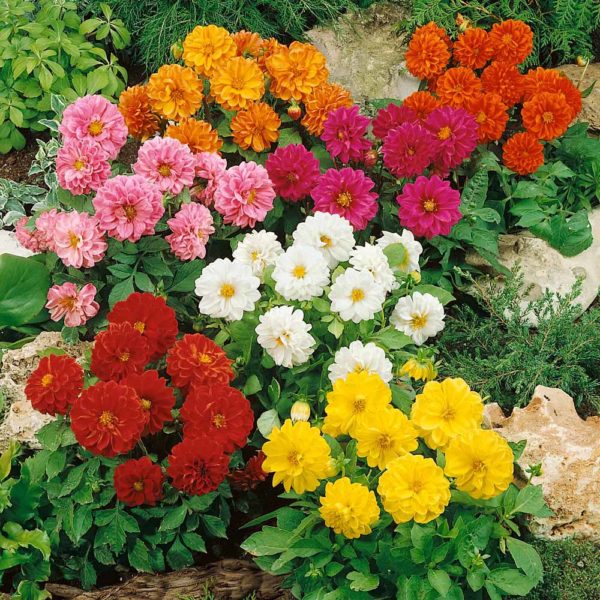
Varieties dahlia
Perennial dahlias are represented by a wide variety of varieties. There are simpler options that are grown everywhere. In addition, gardeners happily decorate the flowerbed and more lush flowers.
Each of the varieties is unique, has its advantages:
- Simple dahlias. Plants reach a height of up to 60 cm. The diameter of the flowers can be up to 10 cm. The petals are represented by an oblong shape, the core is flat. The color scheme is especially interesting. Flowers can be of different shades: red, pink, yellow, white.
- Anemic dahlias. Plants can be up to 90 cm high. Most often they are grown along the fences, near the house. Oblong petals are located around the core. Flowers can be both monophonic and two-tone.
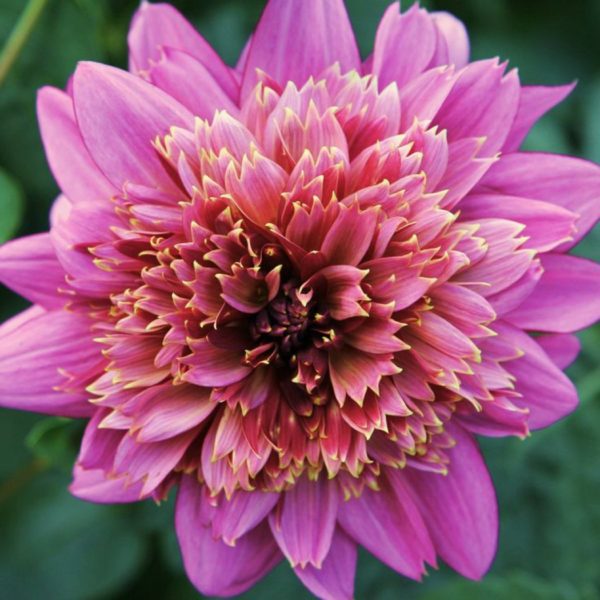
- Collar. Tall plants, up to 120 cm in size. They have an unusual flower structure. Petals are painted in several tones. Many varieties of this group have twisted petals.
- Pion-shaped. Flowers have a diameter of up to 15 cm, plant height up to 120 cm. Large petals have an oval shape, arranged in several rows. Most often, yellow buds are found.
- Decorative. In height, plants can reach up to 150 cm. Inflorescences can be of different sizes. There are both miniature flowers and huge ones. Petals are arranged in several rows.
- Spherical. The bush can be up to 120 cm high, the diameter of the inflorescences is up to 15 cm. The flowers themselves are slightly flattened, have the shape of a ball. The petals located on the bottom row are slightly twisted.
- Pompoms. Plants are small in size. The diameter of the inflorescences does not exceed 7 cm. The shape of the flower is spherical, the petals are arranged in several rows.
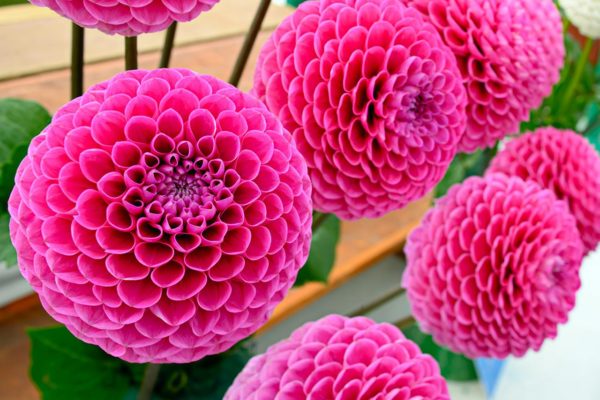
- Cactus. The bush can be up to 150 cm high, the diameter of the inflorescence is about 25 cm. The flowers are collected in several rows, they look like spines of a cactus.
- Semi-cactus. The group is slightly different from the previous one. The only difference is that the petals of this variety are slightly wider.
- Mixed. Bright representatives of this group are the chrysanthemum and orchid dahlia.
Preparation and storage of tubers
You can start work from the end of September. As soon as the stems die, the tubers of the perennial dahlia must be carefully removed from the ground and the necessary conditions for further storage must be provided.
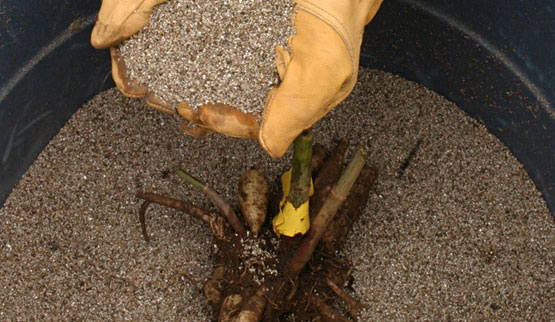
Tubers must be treated with potassium permanganate solution. After that, they need to be dried. Tubers should be placed in a room with a temperature of up to -5 degrees or put in a refrigerator.
For storage, you can use sawdust, sand, peat. In addition, you can take cling film. Boxes need to be filled with one of the selected components and put tubers in them.
Diseases and Pests
The most common flower pests are as follows:
- Aphid. You can deal with the pest with a soap solution.
- Slug. When they appear, crops should be treated with a solution of celandine.
- Of the most dangerous diseases are the following:
Gray rot. The first sign of the disease is the appearance of brown spots on the leaves. Most often this happens due to waterlogging of the soil. To protect crops, it is necessary to remove damaged parts, and treat plants with fungicides.
Withering. When the flowers are damaged, the tubers rot. To get rid of the disease, you must carefully consider watering.
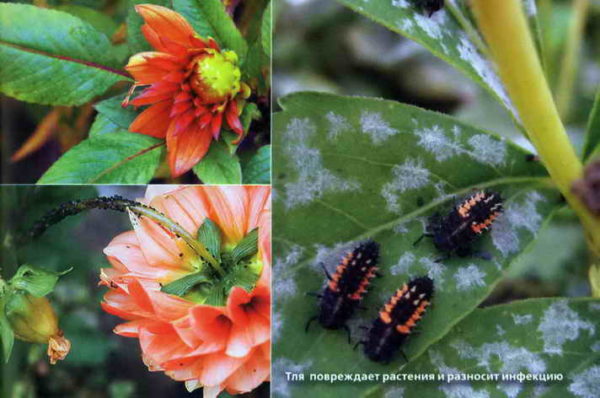
Dahlias in landscaping
Having learned about the main points about planting and caring for perennial dahlias, you can create a flower bed of incredible beauty on your own site. Flowers look interesting in single plantings. In addition, they are combined with other colors.
- Depending on the variety, experienced flower growers create different flower arrangements.
- Low-growing varieties are used for carpet plantings. They are also found in containers.
- Tall plants are a wonderful decoration for flower beds, they are placed along the fence or near the house.
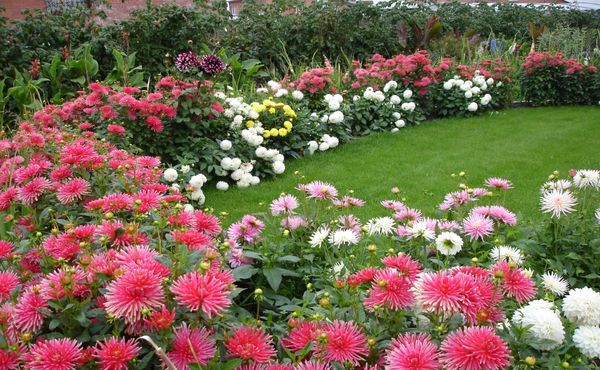
Reviews
Anastasia, 54 years old:
“I used to be indifferent to dahlias. However, I met terry flower seeds. Sowed them out of curiosity. What was my surprise when the dahlias bloomed. I decided to keep them for the winter. Now I plant every year and admire the magnificent flowering. "
Victor, 43 years old:
“How to plant perennial dahlias I learned recently. My wife and I are engaged in growing flowers. We are very pleased that such beautiful and vibrant plants are present on our flowerbed. "
Dahlias are very popular. Many gardeners give them their preference. A simple growing process and long flowering allows you to create a stunning flower garden.

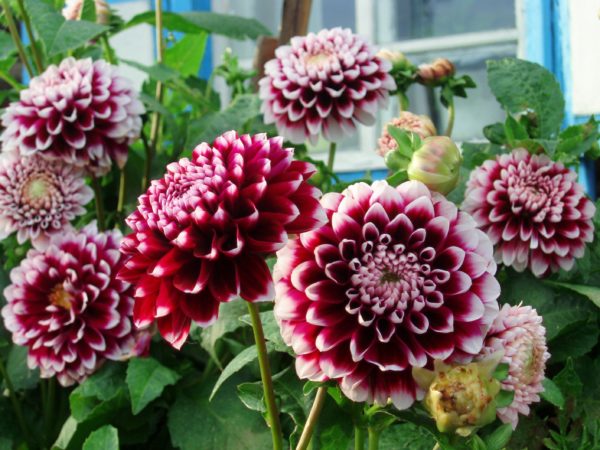
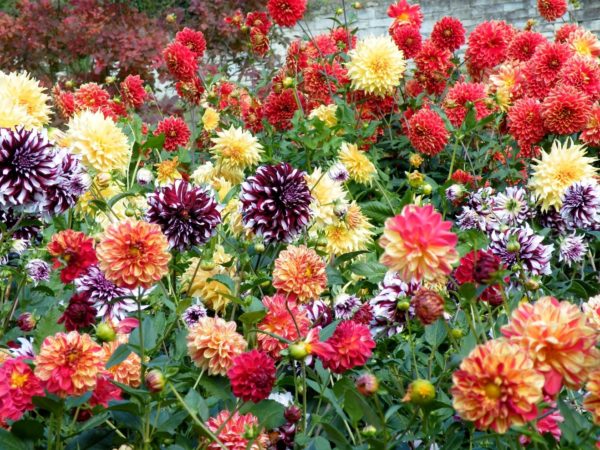
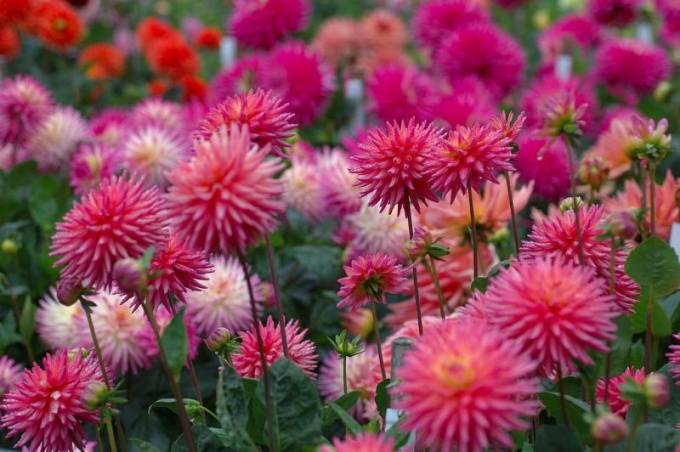

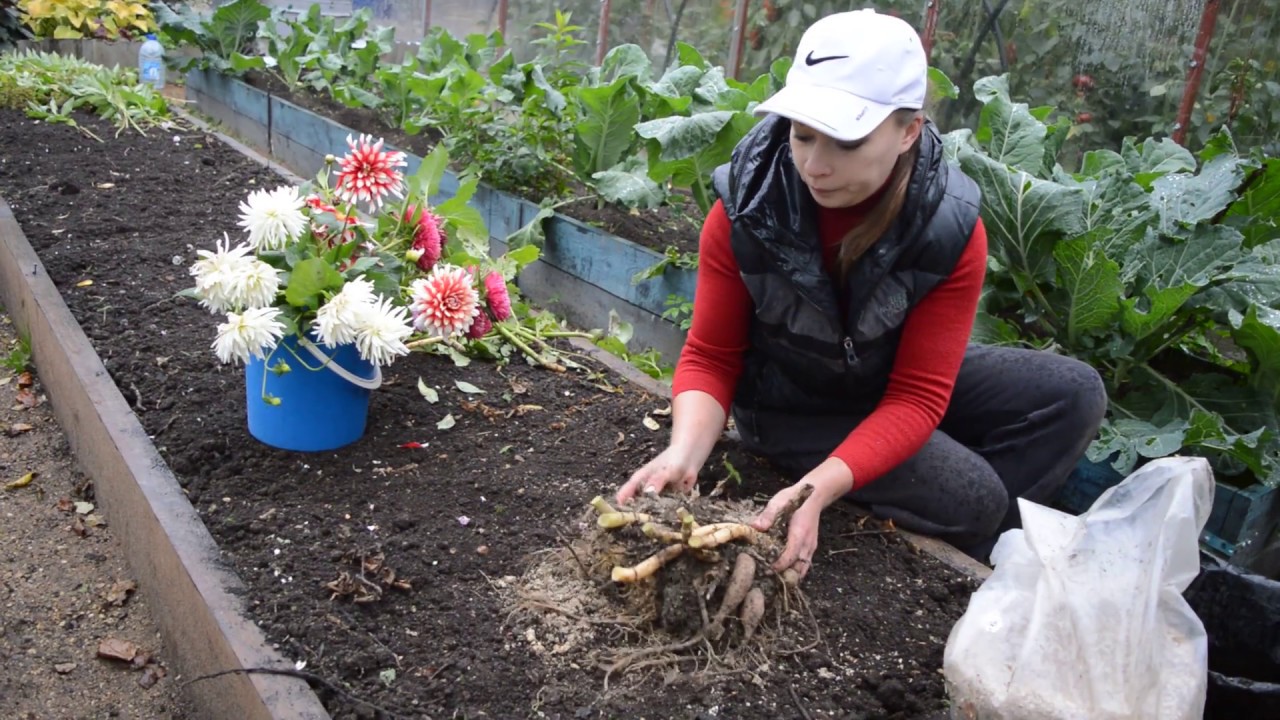
 When to plant annual dahlias for seedlings according to the lunar calendar in 2018
When to plant annual dahlias for seedlings according to the lunar calendar in 2018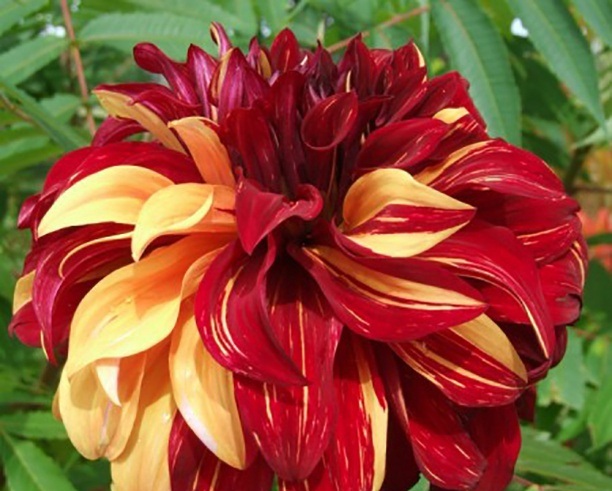 Description of the decorative dahlia "Bohemian Spartacus"
Description of the decorative dahlia "Bohemian Spartacus"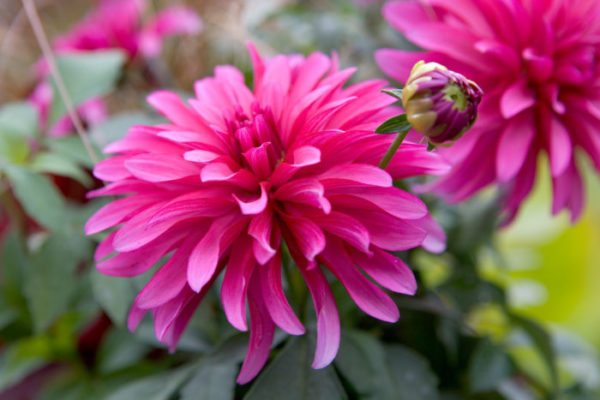 Dahlia Gallery: description of varieties, photo
Dahlia Gallery: description of varieties, photo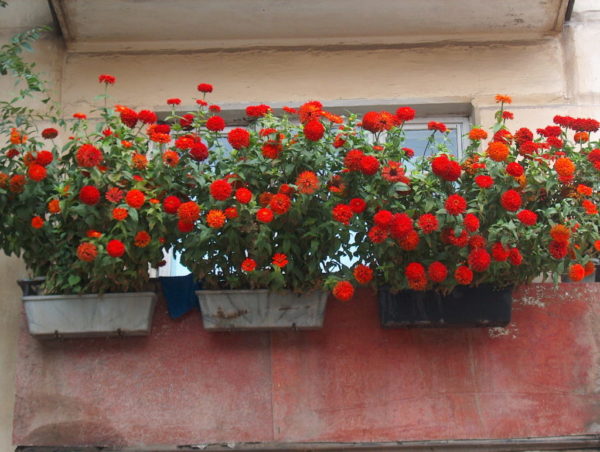 Planting and care of dahlias in pots and on the balcony (photo)
Planting and care of dahlias in pots and on the balcony (photo)